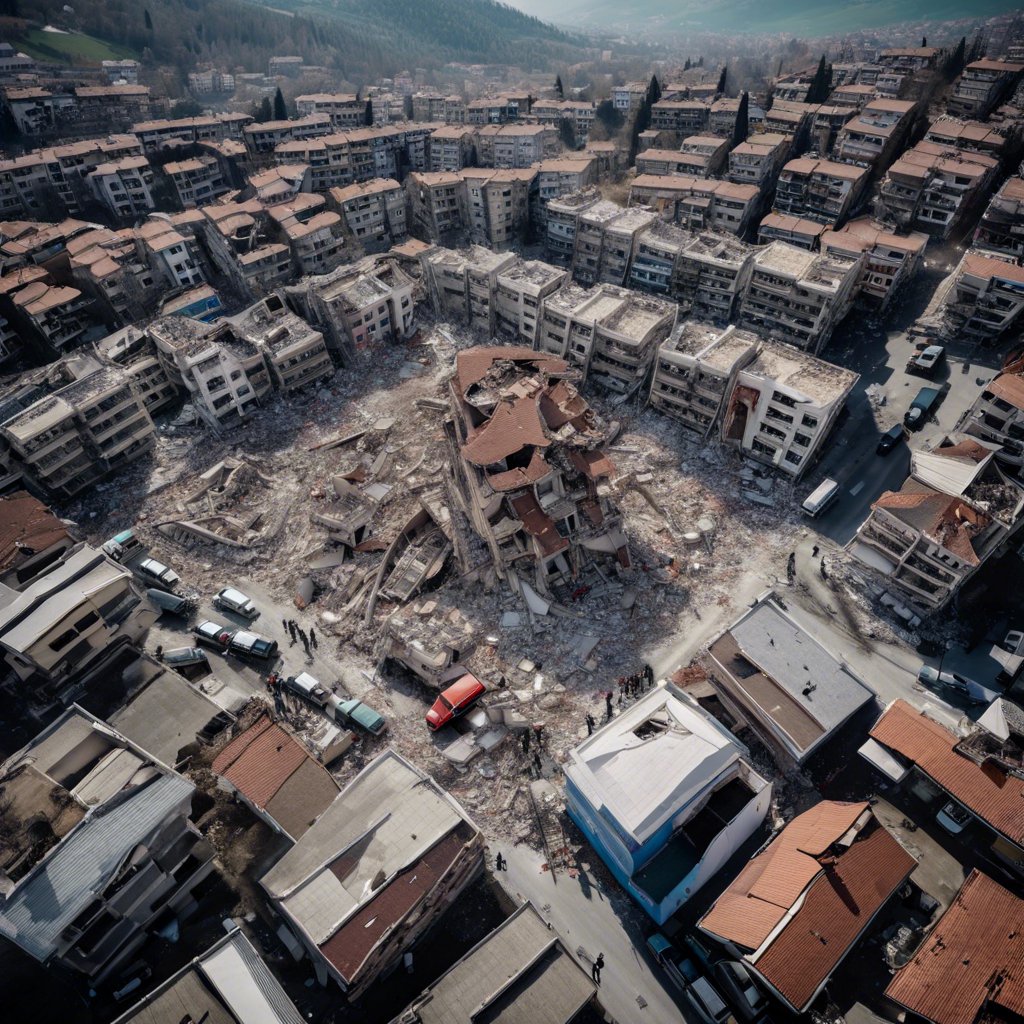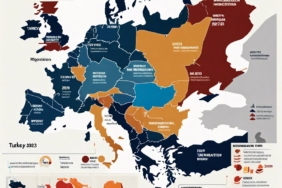Earthquake Facts of Turkey
Turkey was shaken by earthquakes of magnitude 7.7 and 7.6 that occurred on February 6, 2023, centered in Kahramanmaraş. These devastating earthquakes deeply affect not only physical structures but also people’s lives. As a result of the earthquakes, there was great destruction, many deaths and injuries. After the earthquake, Dokuz Eylül University (DEÜ) and TÜBİTAK’s stakeholder organizations, the Ministry of Interior Disaster and Emergency Management Presidency, General Directorate of Mineral Research and Exploration, General Directorate of Mapping, Union of Turkish Municipalities and scientists from many universities were urgently directed to the earthquake zones.
Comprehensive research has been initiated on fault lines that may directly affect provinces in the Central Anatolia, Mediterranean, and Southeastern Anatolia regions. A team of experts including academics such as Prof. Dr. Hasan Sözbilir, Dr. Mustafa Softa and Dr. Özkan Cevdet Özdağ from DEÜ, Prof. Dr. Ercan Ersoy, Dr. Elif Akgün, Dr. Serap Çolak Erol, Dr. Sibel Kayğılı from Fırat University, Prof. Dr. Volkan Karabacak from Eskişehir Osmangazi University, Prof. Dr. Çağlar Özkaymak from Afyon Kocatepe University, Prof. Dr. Fikret Koçbulut from Çukurova University, and Dr. Faculty Member Serkan Gürgüze from Selçuk University are conducting studies on important faults such as the Şirvan Fault, the Cizre Fault, the Antakya Fault, the Dead Sea Fault, the Malatya Fault, and the Central Anatolian Fault-Deliler segment.
‘A LARGE-SCALE PROJECT’
DEU Faculty of Engineering, Department of Geological Engineering, General Geology Department, Faculty Member Prof. Dr. Hasan Sözbilir shared the following information about the ongoing studies: “After the February 6 earthquake, it is aimed to examine all the faults around the surface rupture in detail. A large-scale project is being carried out that aims to find answers to questions such as “As how often did these faults produce earthquakes in the past? When was there a risk of rupture in the future?” Approximately 100 scientists are working within the scope of the project and more than 90 graduate students are supporting these studies. With the project to be completed by the end of 2025, ‘Turkey’s Earthquake Hazard Map’ will also be updated.
‘WE WILL TRY TO FIND THE DANGER LEVEL’
Finally, Prof. Dr. gave information about the studies carried out in the Kahramanmaraş region. Sözbilir said, “We carried out our latest work around Narlı in Kahramanmaraş. We dug 2 trenches on the first broken piece in the February 6 earthquake. This piece is actually breaking for the first time. There is a new fault development. This is a Natural process. Under normal conditions, an existing fault is used when an earthquake occurs. However, in some cases, especially when very strong earthquakes occur, new fractures can form on the surface of the earth. piece. We also dug 2 trenches on the Narlı Fault. 3 earthquakes were recorded for people living on the Narlı Fault. As a result of these earthquakes, the Narlı Fault has become a fault that carries a high earthquake risk today. are parts of the Ölüdeniz Fault, such as the Sakçagöz Fault, Yesemek Fault and Hacıpaşa Fault. We plan to dig trenches on these faults in the coming days. Thus, we will try to determine the dangers and the level of danger that may occur. the part of the Ölüdeniz Fault within the borders of Turkey.”
‘A SUDDEN BREAKING HAS NOT HAPPENED YET’
Stating that they detected 3 historical earthquakes in the Narlı Fault studies, Prof. Dr. Hasan Sözbilir said, “We observed that the February 6 earthquake had a very small effect on the Narlı Fault, but we can say that a sudden rupture has not occurred yet. Therefore, there is a possibility that the Narlı Fault will rupture in the future The rupture of the Narlı Fault could cause an earthquake with a magnitude of 6.7. If it merges with the Sakçagöz Fault, the magnitude of this earthquake has the potential to increase even more. The Narlı Fault is located in a region between Kahramanmaraş and Gaziantep. . Therefore, the rupture of the faults in this region has the potential to seriously affect both provinces. It is of great importance to accelerate earthquake preparation studies, especially since the earthquake continues in Kahramanmaraş and Gaziantep.”


















